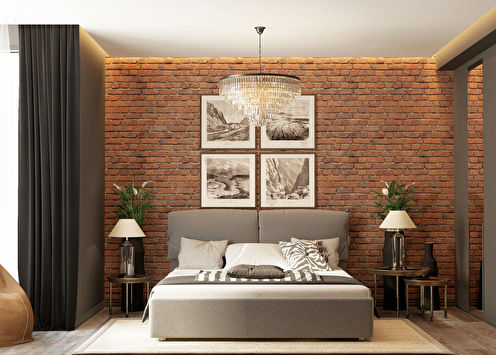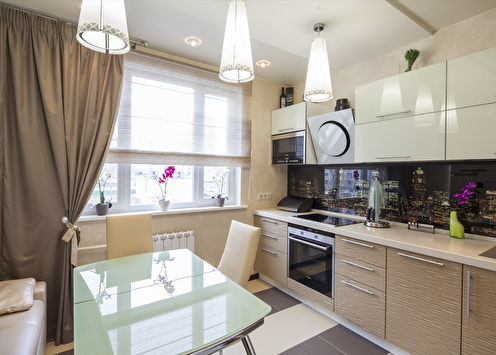
The kitchen is one of the most fastidious rooms in the house due to high humidity, frequent changes in temperature, soot and flying drops of fat. The wall covering is especially endangered, which even the most powerful hoods cannot always protect. But what if you want to beautifully design a room? We suggest you familiarize yourself with the 10 best materials for wall decoration in the kitchen and choose the most optimal solution!
1. Ceramic tile
Let's start with the most popular finish. Ceramic tiles are used in the design of many modern apartments, and for good reason: it is a durable, stable lining with high decorative properties. It can tolerate high temperatures, is resistant to moisture, as well as hot fat. The tiles are easy to care for using cleaning products.
In addition, the material has an aesthetic appearance, a variety of color and texture. Great for the most dangerous area in the kitchen where the stove is located. The interior can be combined with other types of finishes, creating a harmonious composition.
When choosing a ceramic tile, note that it comes in several forms: smooth, textured, matte or glossy. This classification takes into account the visual aspect without affecting the technical properties. In the interior of the kitchen, such a lining can become a bright accent, “reviving” even the most restrained design.
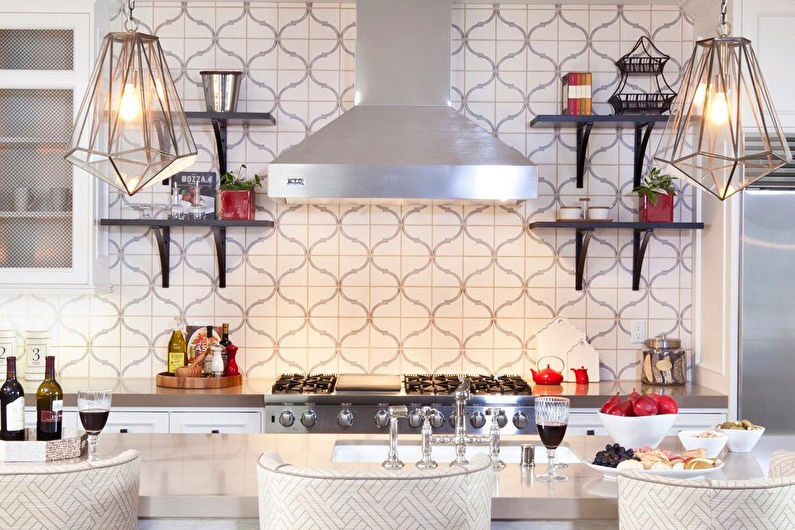
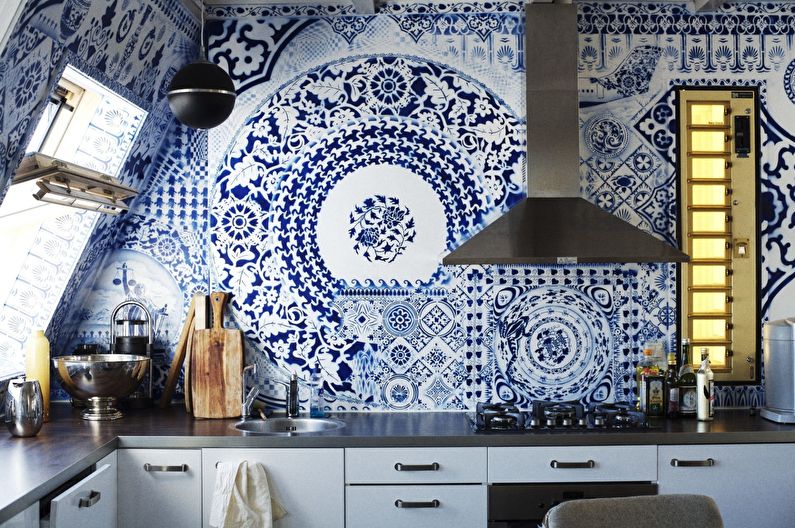
2. Wallpaper
A universal option for any interior. Just keep in mind that traditional paper wallpapers will not work for the kitchen due to low stability and relative fragility. Today you can find other, more advanced types that will not only heroically withstand any kind of work in the kitchen space, but also help create a beautiful design.
Vinyl wallpapers do their job well. They are two-layer: the paper acts on the basis of which a layer of polyvinyl chloride is applied. The last element just protects the walls from mechanical and chemical influences, and also increases the service life.
Unlike vinyl, the basis of non-woven wallpaper is, respectively, non-woven. They are able to hide the irregularities of the walls and is often used for further painting. The technical properties have much in common with the previous view, while they are considered a more expensive option.
When choosing a type of wallpaper, start from financial opportunities, design needs and requirements for durability. Regarding decorative properties - in the modern market you can find options for a wide variety of colors, patterns and textures.
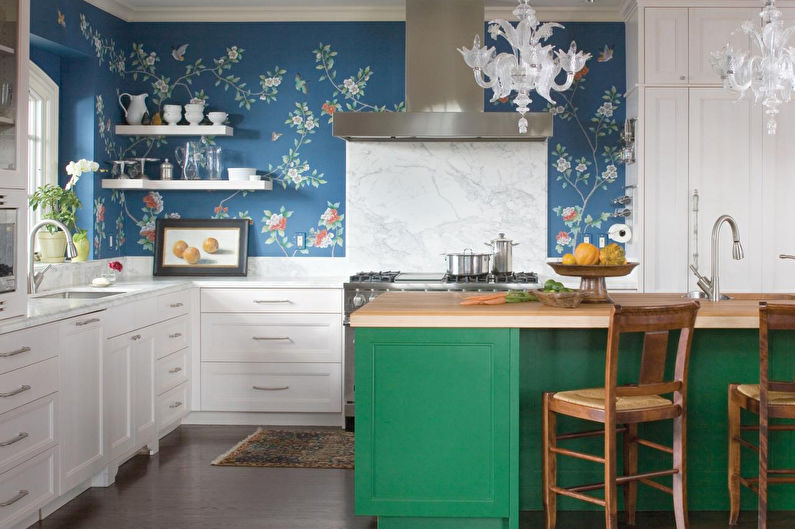
3. Paint
A budget as well as a minimalistic option that can bring a sense of cleanliness and harmony to the interior of the kitchen. All you need is paint and a perfectly flat surface. The need for the latter component can be considered one of the drawbacks, since in this case the walls require additional preparation. But if you have nothing to hide, then painting will be an ideal option.
Conventional paint for finishing will not work - it is better to give preference to moisture-resistant and washable options. Then wall care will not be problematic, and the durability of the coating will be an additional advantage.
It may seem to someone that a plain wall covering looks boring and not attractive. It all depends on the design of the kitchen: if your interior lacks bright accents, it is recommended to combine several colors, matte or glossy paint.
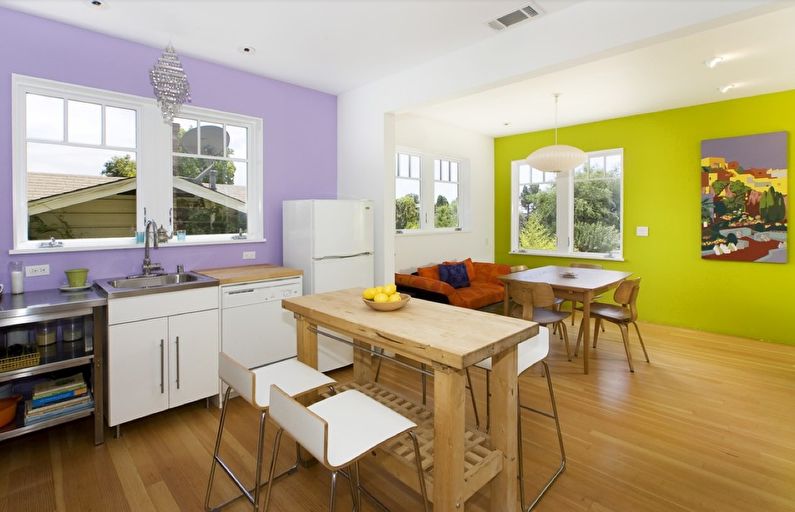
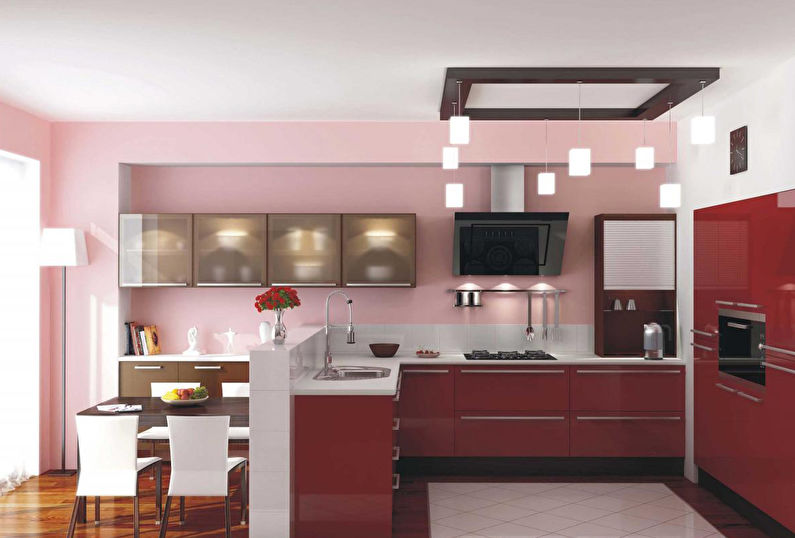
4. Decorative plaster
Want to create a unique design in the kitchen? Decorative plaster is an ideal material for this purpose. Even if you try very hard, you are unlikely to succeed in creating two walls with the same texture - depending on the application, the pattern will be different.
The composition of decorative plaster includes various mixtures with binders. In this regard, there are many types, but only silicate and stone crumb are suitable for the kitchen.
Such a finishing material hides the imperfections of the walls, but it requires the most even surface. Differs in durability, environmental friendliness and is very convenient in leaving.

5. Panels
This type of decoration is less popular, but is often used in cases where it is necessary to diversify the interior. The most common material is plastic, which is easy to install and inexpensive. It is often combined with other finishes, as in some interiors solid walls with panels can look monotonous and boring. Nevertheless, they are well suited for the kitchen - due to their resistance to moisture and various pollutants. The disadvantages include non-environmental material, as well as a short life.
If you have chosen the country style for your kitchen, then without wooden panels it will be difficult to do. But this type of wall decoration requires additional processing to increase resistance to moisture. In addition, it is quite expensive, but this money is worth the warmth and comfort that the texture of the tree gives.
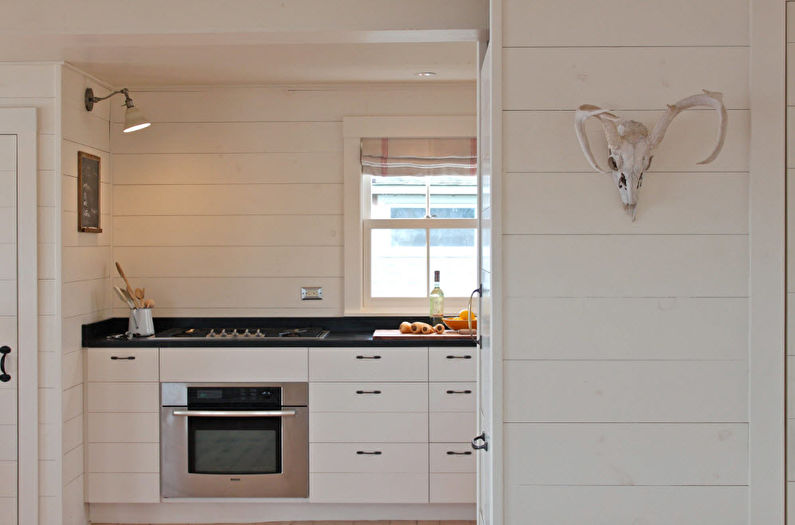

6. Decorative stone
To bring a little sophistication and exclusivity to the interior will help decorative or artificial stone. It differs from natural lightness, which is especially relevant during transportation, high strength, as well as resistance to external irritants. The composition of the material may include sand, concrete, clay or even gypsum, which makes it quite environmentally friendly. When choosing, you should give preference to moisture resistant options, otherwise you will have to use a special protective coating.
Decorative stone is best suited for spacious, bright kitchens, especially in combination with other finishes. Despite the “artificial” origin, the walls will look natural and original.
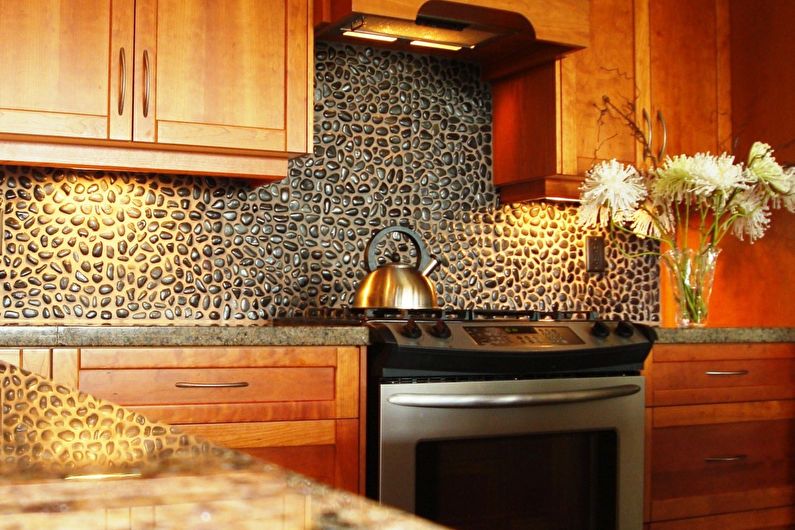
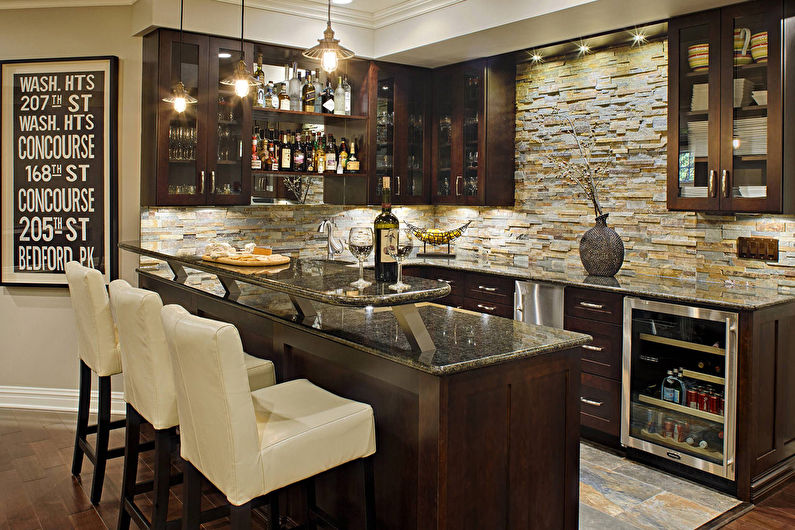
7. Brick
Brick walls are a key element of any loft design. But for other styles, it is suitable as a brutal, fresh accent. Of course, visually masonry can be created using panels or wallpapers. However, if you have a bare brick wall without plaster, then consider yourself lucky.
This type of wall attracts with a low cost of decoration and ease of creation. Only for the kitchen, it is better to process the brickwork with special protective agents.
As in the case of decorative stone, the brick looks more harmonious in large spaces. At the same time, you can combine it with both dark and light tones in the interior.
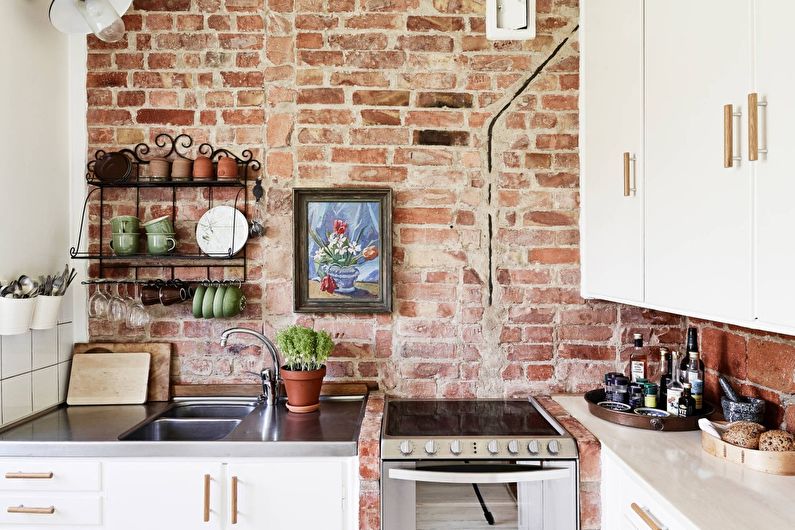
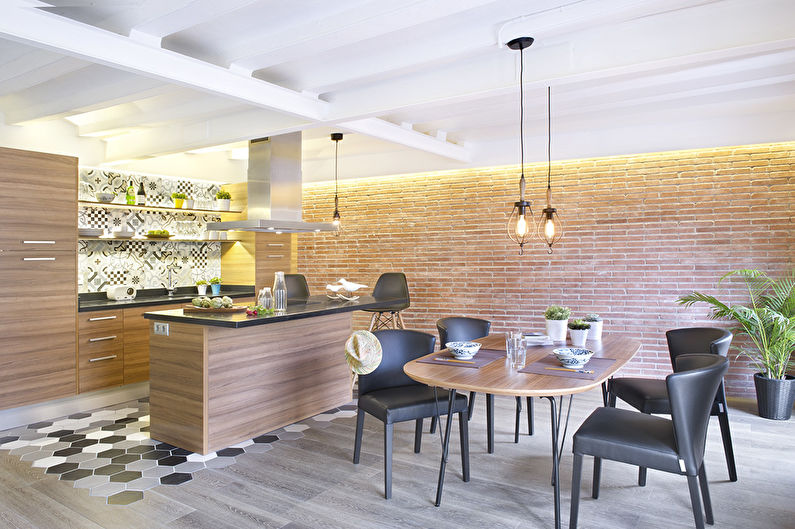
8. Cork coverings
We note immediately that the cork is more likely to be more suitable for the dining area than for the working one. It is not very strong, has low resistance to mechanical damage and does not differ in durability. However, modern protective sprays, powerful hoods, as well as elementary accuracy can level these shortcomings.
Cork coverings attract with their variability, beautiful texture and interesting styling techniques. For example, there are cork boards, wallpaper or even liquid cork. This is a natural material that will help create coziness in the interior of the kitchen, while saving considerable money.
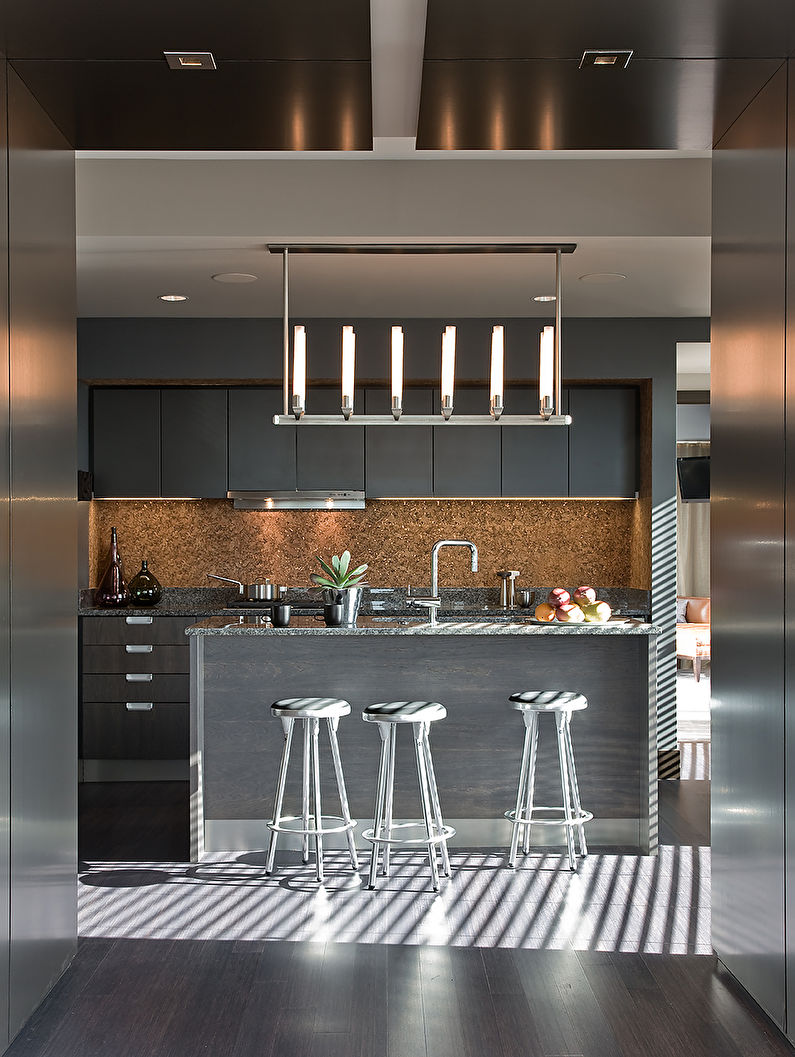
9. Marble
This material for wall decoration in the kitchen just can not be called cheap. Marble is not in vain considered an elite stone that is suitable for luxurious or minimalist interiors. It has a beautiful natural texture, noble gloss, wide variety of shades. Suitable for an apron of the kitchen, as well as for other areas.
Marble surfaces are quite convenient to use.They are resistant to pollution, temperature changes and are easy to care for. We can say with confidence that these are walls for centuries - you definitely don’t have to worry about the life of the unit.
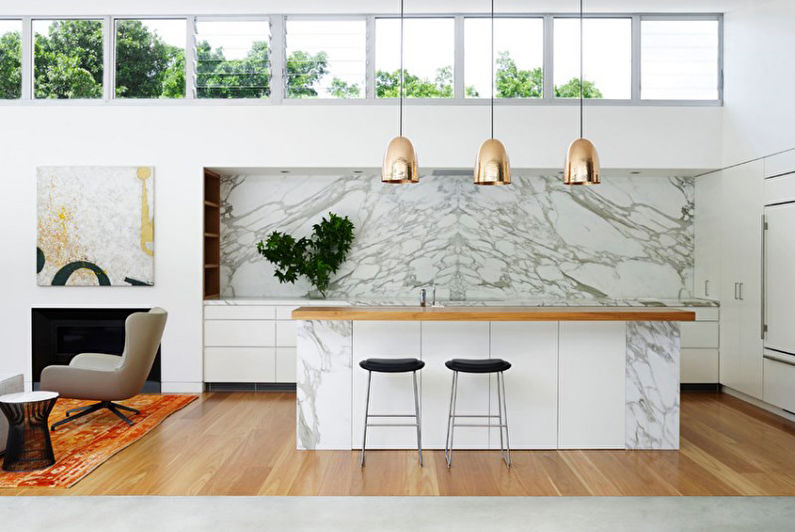
10. Glass
And finally, the most unusual material that is best suited for the kitchen apron. Moisture and high temperature drops are not afraid of him. Some might say that grease or fingerprints are more visible on such surfaces. In fact, there are as many traces as there are on ceramic tiles, while looking after the glass is much easier.
It is recommended to use tempered glass - it is stronger and safer than usual, and in the working area you can’t do without it. In addition to technical properties, it should be noted decorative. In addition to colorless glass, on the modern market you can find surfaces with photo printing, drawings on film or simply painted. There are many options for design design. The main thing is to correctly fit into the interior.
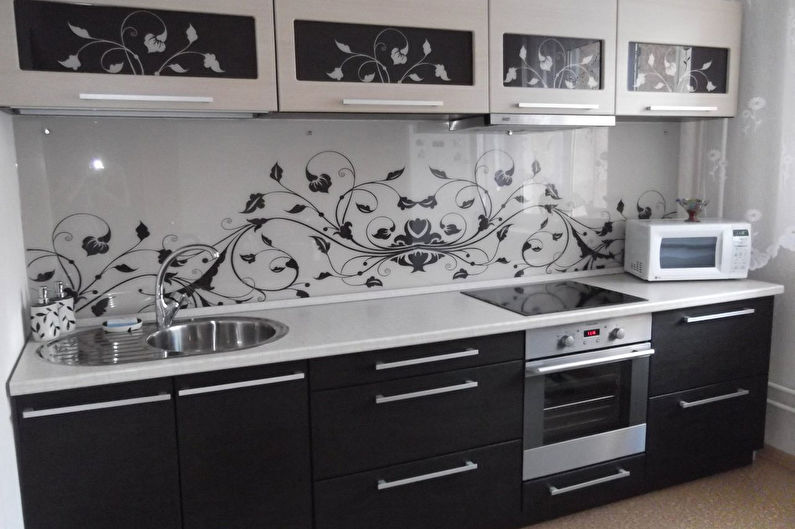
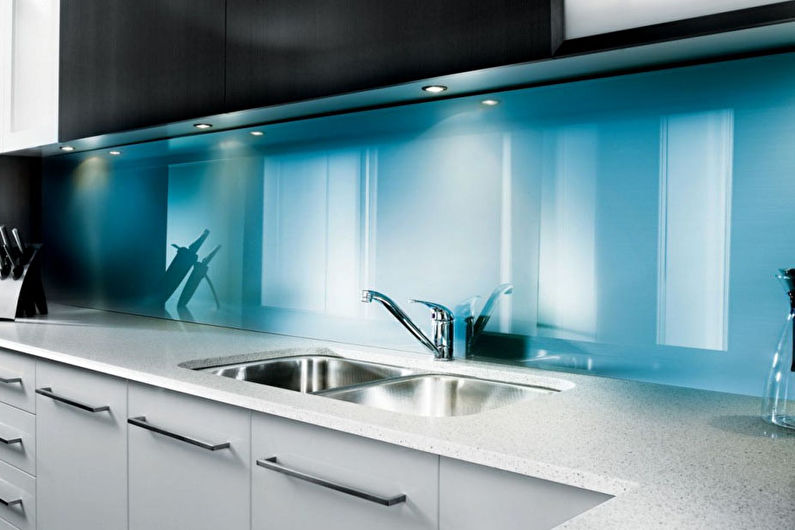
Video: Kitchen Wall Ideas
